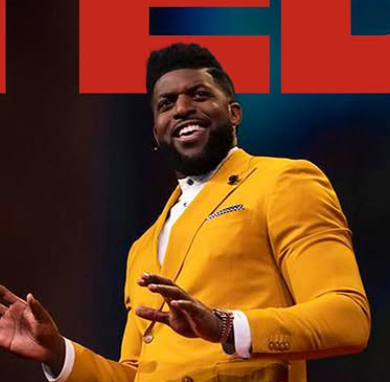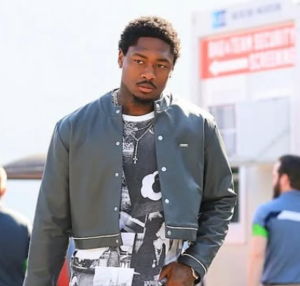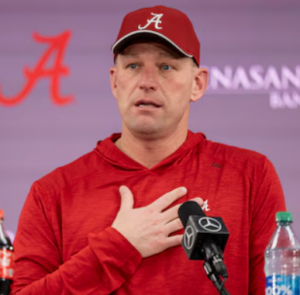Emmanuel Acho’s breakdown of NFL coaching hires is more than just a collection of statistics. It is a call to action for the league to address its systemic inequities
By acknowledging and confronting these challenges, the NFL has the opportunity to lead by example, creating a more equitable and inclusive future for all.
Emmanuel Acho’s analysis highlights a pressing issue in the NFL: the unequal treatment of Black head coaches.
The statistics he presented—11% of White head coaches versus 35% of Black head coaches being dismissed after one season—underscore the need for systemic change.
By addressing biases in hiring and firing practices, strengthening the Rooney Rule, and fostering a culture of inclusion, the NFL can create a more equitable environment for all coaches.
The league’s commitment to diversity and fairness will not only benefit its coaches but also enhance its credibility and reputation. As fans and stakeholders demand accountability, the NFL must rise to the challenge and ensure that every coach, regardless of race, has the opportunity to succeed.
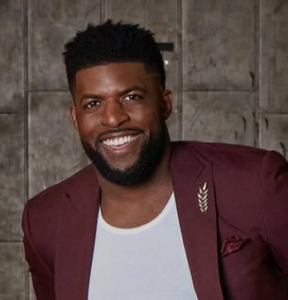
Also Read: Mark Andrews (NFL): Bio, Wiki, Career, Net Worth 2025, Playing Style And More Explained
Table of Contents
Emmanuel Acho: The Stark Disparity in NFL Head Coaching Tenures
Emmanuel Acho, a former NFL linebacker and prominent sports analyst, has brought attention to a glaring issue in the National Football League (NFL) regarding the treatment of Black head coaches.1
His findings, presented on “The Facility Show” on January 8, 2025, shed light on the higher dismissal rates of Black head coaches after their first season compared to their White counterparts.
With concrete statistics and recent dismissals as context, Acho’s analysis has sparked a necessary conversation about equity in NFL leadership roles.
The Numbers Tell a Troubling Story
Acho’s breakdown of hiring and firing patterns in NFL head coaching over the past decade reveals a significant racial disparity.
While more White head coaches have been “one-and-done”—fired after just one season—the percentage of Black head coaches facing this fate is disproportionately higher.
According to Acho, 11% of White head coaches are dismissed after their first season, while 35% of Black head coaches endure the same fate.
These percentages underscore a systemic issue, suggesting that Black head coaches are not afforded the same level of patience or opportunity to establish themselves as their White counterparts.
Hollywood Hills 💔💔💔 https://t.co/0Bh2zHfbQF pic.twitter.com/RRUTRu8IPq
— Emmanuel Acho (@EmmanuelAcho) January 9, 2025
Recent Firings Highlight the Trend
The timing of Acho’s analysis coincides with the recent firings of Antonio Pierce by the Las Vegas Raiders and Jerod Mayo by the New England Patriots.
Both coaches were dismissed after a 4-13 season. While losing records often lead to coaching changes, the broader context of the NFL’s hiring and firing practices raises questions about fairness.
Pierce, who took over as the Raiders’ interim head coach mid-season, faced significant challenges with a struggling roster. Despite his efforts, he was not given the opportunity to return for another season.
Similarly, Mayo, a highly respected figure within the Patriots organization, was dismissed under comparable circumstances. Their firings align with the troubling pattern Acho described.
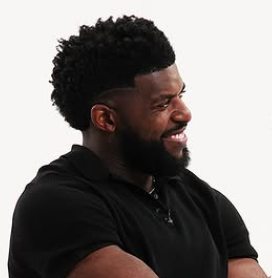
Emmanuel Acho: Historical Context of Black Coaches in the NFL
The underrepresentation and mistreatment of Black head coaches in the NFL are not new phenomena.2
Historically, Black coaches have struggled to secure and retain head coaching positions, even as players and coordinators of color have excelled in the league.
The Rooney Rule, implemented in 2003, requires NFL teams to interview minority candidates for head coaching and senior football operations jobs. However, critics argue that the rule has done little to address the systemic biases that persist.
Patience Versus Performance
A key issue highlighted by Acho is the lack of patience shown to Black head coaches. NFL teams often emphasize the importance of long-term vision and cultural change when hiring a coach.
However, Black head coaches are frequently held to unrealistic standards, expected to deliver immediate results despite inheriting struggling teams.
In contrast, White head coaches are often given multiple seasons to implement their vision and build successful programs.
This disparity suggests that Black head coaches are not evaluated on the same criteria, further perpetuating an uneven playing field.

The Impact of Perception
Perception plays a significant role in how coaches are treated and evaluated. Black head coaches are often perceived as less capable, even when their qualifications and track records rival those of their peers.
This implicit bias affects hiring decisions, media narratives, and fan expectations, creating additional hurdles for Black coaches to overcome.
For example, a White head coach who inherits a poorly performing team may be praised for making incremental progress, while a Black head coach in a similar situation may be criticized for failing to achieve immediate success.
This double standard reinforces the cycle of short tenures for Black coaches.
The Role of Ownership and Leadership
NFL team owners and executives play a crucial role in shaping the league’s culture and hiring practices. The lack of diversity among NFL ownership and leadership contributes to the underrepresentation of Black head coaches.
Owners and general managers often hire candidates they feel comfortable with, which can lead to hiring decisions influenced by unconscious bias.
Increasing diversity within ownership and executive ranks could help create a more equitable environment for Black coaches.
When decision-makers reflect the diversity of the league’s players and fans, they are more likely to prioritize inclusive practices.
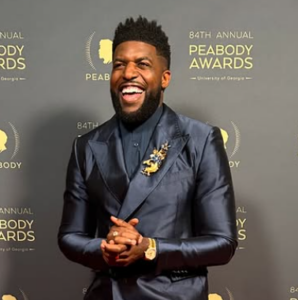
Emmanuel Acho: The Rooney Rule
Successes and Shortcomings
The Rooney Rule was a step in the right direction, but its effectiveness has been limited. While it has increased the number of interviews granted to minority candidates, it has not significantly improved hiring outcomes.3
Critics argue that some teams treat the rule as a box-checking exercise rather than a genuine effort to consider diverse candidates.
To make meaningful progress, the NFL must strengthen the Rooney Rule by implementing accountability measures.
For instance, teams could face penalties for failing to comply with the rule or for engaging in tokenism. Additionally, providing support and resources for minority coaches could help them succeed once hired.
Advocating for Change
Acho’s analysis serves as a call to action for the NFL and its stakeholders. To address the disparity in head coaching tenures, the league must take a comprehensive approach that includes:
- Education and Training: Providing implicit bias training for owners, executives, and hiring committees.
- Mentorship Programs: Creating mentorship opportunities for minority coaches to help them navigate the challenges of leadership roles.
- Transparent Hiring Practices: Promoting transparency in hiring decisions to ensure that all candidates are evaluated fairly.
Prominent Examples of Black Head Coaches
Despite the challenges, several Black head coaches have made significant contributions to the NFL. Tony Dungy, the first Black head coach to win a Super Bowl, and Mike Tomlin, one of the longest-tenured head coaches in the league, have set powerful examples of success.
Their achievements demonstrate that given the right opportunities, Black coaches can excel at the highest level.
However, the success stories of a few should not overshadow the systemic issues that persist. For every Dungy or Tomlin, there are numerous qualified Black coaches who have been denied opportunities or dismissed prematurely.
Moving Beyond Tokenism
To create lasting change, the NFL must move beyond tokenism and address the root causes of the disparity. This requires a commitment to diversity, equity, and inclusion at every level of the league.
By fostering a culture that values diverse perspectives and experiences, the NFL can ensure that all coaches have a fair shot at success.
The disparity in head coaching tenures is not just an NFL issue; it reflects broader societal challenges related to race and equity.
The NFL, as one of the most influential sports leagues in the world, has an opportunity to lead by example. By addressing these disparities, the league can inspire change in other industries and set a standard for fairness and inclusion.
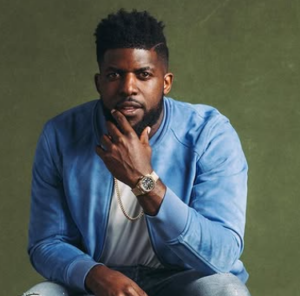
Also Read: Ja’Marr Chase (NFL): Bio, Wiki, Career, Net Worth 2025, Achievements And More Explained
Emmanuel Acho Tells a Deeper Story with Numbers
The Power of Numbers in Context
Emmanuel Acho, a former NFL linebacker turned analyst, has become an influential voice in the sports world, often blending data and personal insight to shed light on critical issues.
His recent remarks on the NFL’s head coaching hires have once again underscored the disparities in opportunities for Black coaches. By breaking down a decade’s worth of hiring trends, Acho illustrates a larger systemic issue.
Over the last ten years, Acho notes that 53 white head coaches have been hired in the NFL, compared to just 14 Black head coaches. This stark contrast reflects a persistent imbalance in hiring practices.
While many organizations claim to prioritize diversity, these numbers suggest otherwise, highlighting a troubling disparity that raises questions about fairness and inclusivity.
The Recent Dismissals: A Mirror of Larger Patterns
The recent dismissals of two prominent coaches—Antonio Pierce of the Las Vegas Raiders and Jerod Mayo of the New England Patriots—further illuminate the challenges Black head coaches face.
Both situations underscore the difficulties inherent in navigating the NFL’s demanding environment, where success is often measured in narrow, immediate terms.
Pierce faced an uphill battle with the Raiders. His tenure was marked by significant challenges, including a 10-game losing streak and the midseason trade of star receiver Davante Adams to the Jets.
Such obstacles would be daunting for any coach, yet they often compound the scrutiny placed on Black head coaches. The Raiders’ recent history—with no head coach completing two full seasons since Jon Gruden’s 2018-2021 stint—adds another layer of complexity.
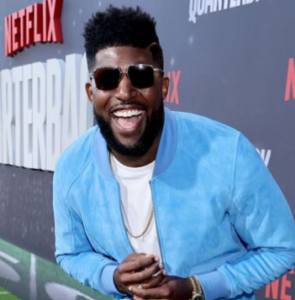
Emmanuel Acho: Fans Reaction
The media’s portrayal of Black head coaches can also influence their tenure. Coaches like Pierce and Mayo are often subjected to heightened scrutiny, with their every decision dissected and criticized.
This creates additional pressure and can contribute to shorter tenures.
Dan Orlovsky’s observation about the “head coaching hiring and firing epidemic” raises important questions about the NFL’s culture.
The league’s tendency to prioritize immediate results over long-term development is detrimental to all coaches but disproportionately affects Black coaches who often inherit struggling programs.
To create meaningful change, the NFL must address the structural barriers that limit opportunities for Black head coaches.
This includes re-evaluating hiring practices, enhancing mentorship programs, and fostering an environment that values long-term development over short-term success.
View this post on Instagram
Success Stories: A Glimmer of Hope
Despite the challenges, there have been notable success stories. Coaches like Mike Tomlin of the Pittsburgh Steelers have demonstrated the impact of stability and support.
Tomlin’s tenure, marked by consistency and success, serves as a model for what is possible when Black coaches are given the time and resources to succeed.
NFL players, many of whom are Black, have also played a significant role in advocating for greater diversity among coaches. Their voices can be powerful in influencing organizational priorities and pushing for systemic change.
Representation matters not just for the individuals involved but for the league as a whole. A more diverse coaching landscape can lead to a richer variety of perspectives, fostering innovation and inclusivity.
Also Read: Case Keenum (NFL): Meet His Parents, Family, Bio, Career, Legacy and More
